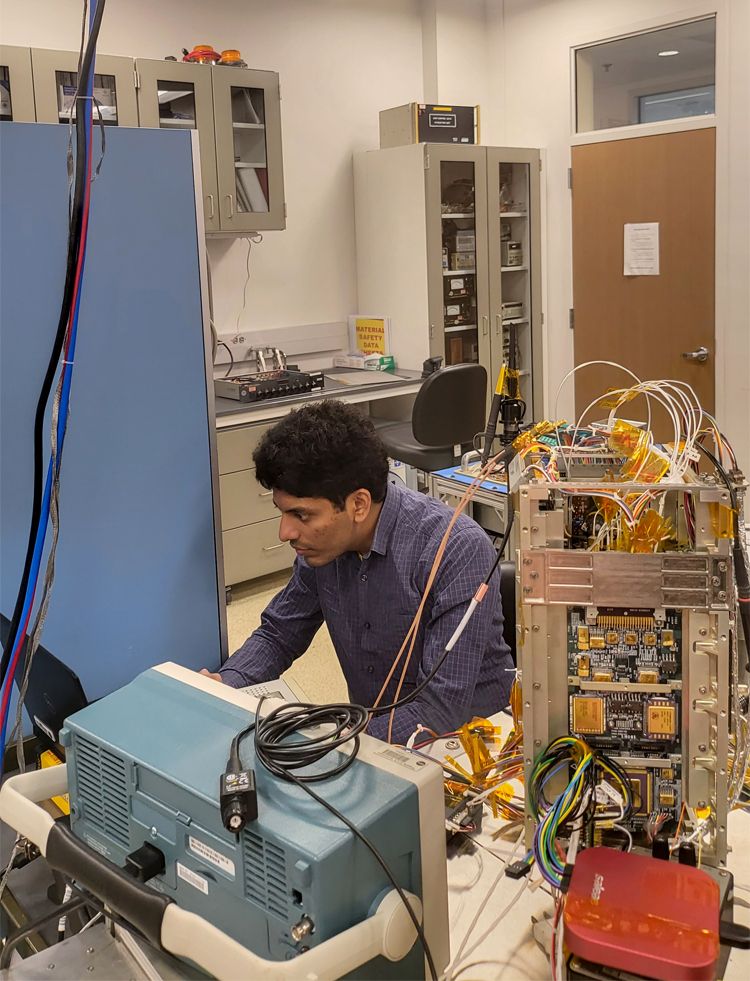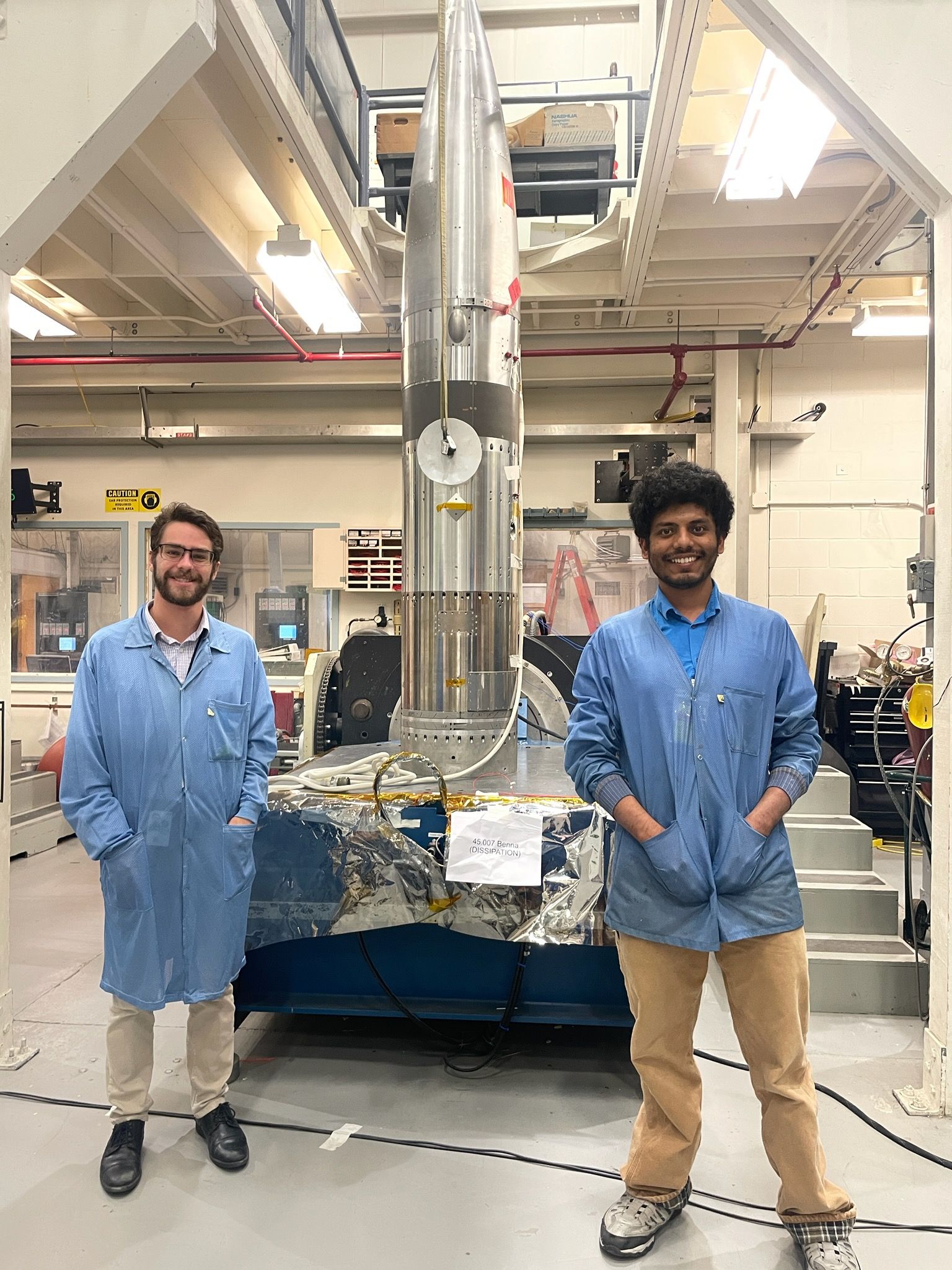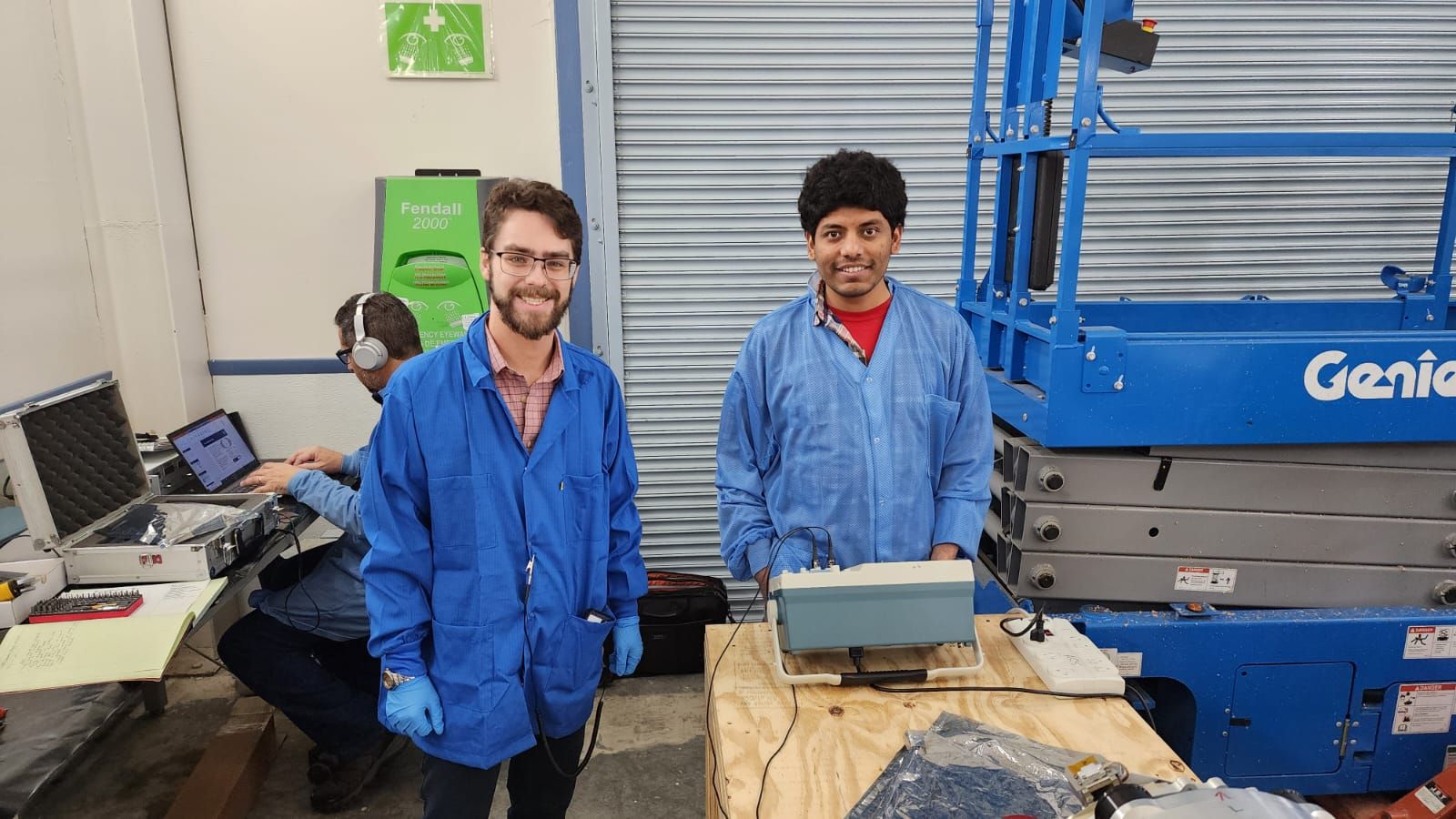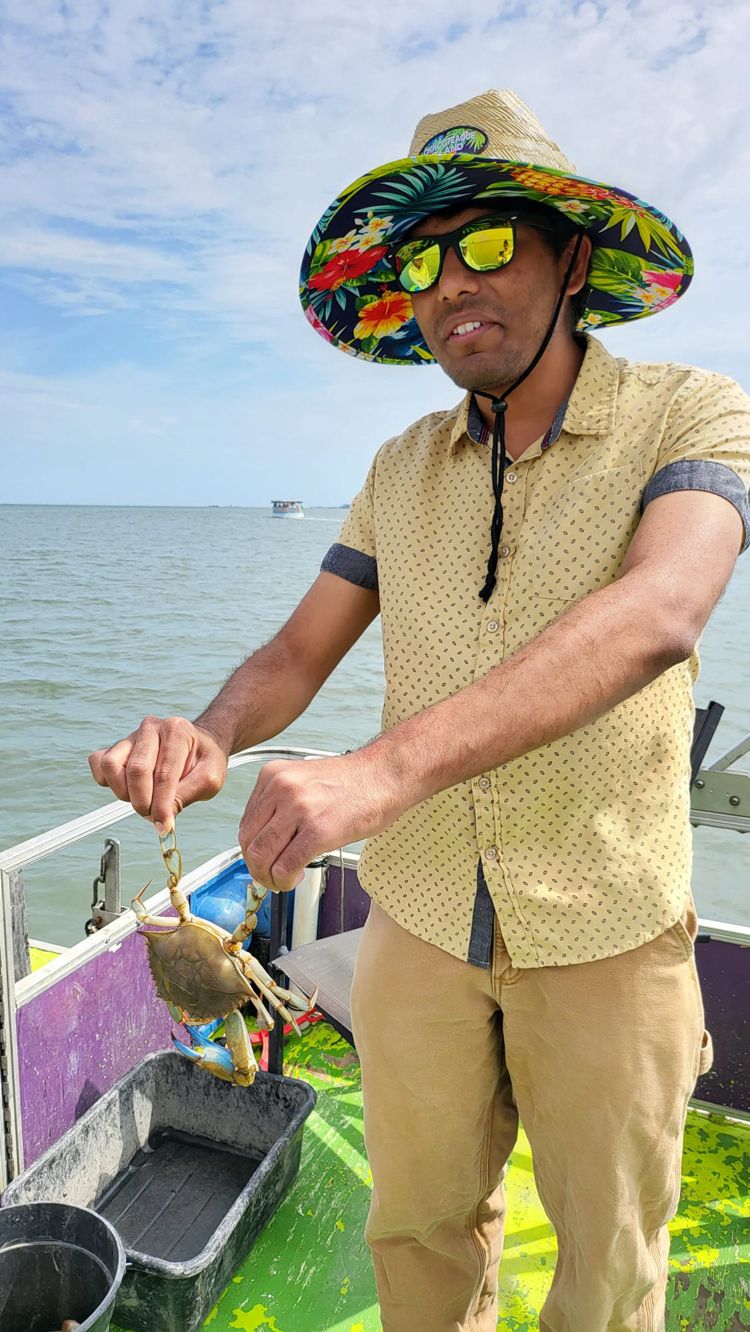Early Career Scientist Spotlight
Mr. Jaykumar Jatinkumar Vaidya (he/him/his)
Planetary Atmospheric Scientist
Planetary Environments Laboratory (699)
What inspired you to pursue a career in planetary sciences?
Pursuing a career in planetary sciences has provided me the opportunity to combine my technical expertise with my fascination for discovery, all while contributing to the pursuit of knowledge that benefits our planet and the broader scientific community.
As a child, I was always fascinated by space exploration, and I dreamt of being part of the scientific community that pushes the boundaries of human knowledge. It was the Voyager missions and the early Mars rovers that particularly captured my imagination. These missions demonstrated the profound impact of engineering on our ability to explore and analyze other celestial bodies.
My journey began with a degree in Electrical Engineering, where I gained a strong foundation in electronics, instrumentation, and data analysis. During my studies, I became increasingly aware of technology's pivotal role in advancing our understanding of the Universe, which motivated me to work in instrumentation engineering and material science. This knowledge further helped me move on to my ultimate goal of applying engineering to the study of planetary science.
However, what truly sealed my commitment to being a researcher was the realization that research is like deciphering a unique puzzle. Each research topic lets humanity advance to solving the so-called mystery of the Universe. When I was a school kid, I liked to solve puzzles and to discover how things around me worked, and all those exploratory experiences continue to inspire and drive me even now while solving large-scale problems in science. My pre-graduate and graduate research included the study of semiconductors and super-conducting materials to construct energy-efficient devices possibly having a wide variety of applications, including space studies. Building upon that work, I was drawn to the challenge of developing instruments that can be shipped with NASA’s flight missions to study atmospheric sciences. My first project at NASA Goddard Space Flight Center (GSFC), in the Astrophysics Division, involved developing a custom atomic layer deposition system that was being made to deposit X-ray mirrors with very tight tolerances. It was proposed that the mirrors could be deployed to image galactic halos. My current work at NASA GSFC involves building quadrupole mass spectrometers that precisely measure the chemical makeup of planetary atmospheres, and that enable us to unravel the mysteries of their compositions and origins.
My work at NASA provides me with the incredible opportunity to contribute to humanity's collective knowledge about the Universe. Every mission is a new adventure, a chance to explore the unknown, and a platform for scientific discovery. It's the perfect fusion of my engineering skills with my passion for discovery, and I find it incredibly rewarding to be part of a team dedicated to expanding our understanding of the cosmos.

Credit: Jaykumar Jatinkumar Vaidya
Tell us about the research projects you are currently working on.
I am involved in various NASA GSFC missions that aim to understand the chemistry of neutral gas and ionic compounds present in the atmosphere of various planetary systems. The most recent mission instrument that I’m working on is a spectrometer that is flying on a sounding rocket mission from Poker Flat Research Range in Alaska. This mission aims to study the velocity and temperature of neutral gas in the atmosphere. It is called Modular Spectrometer for Atmospheric and Ionospheric Characterization (MoSAIC). I first performed the calibration of MoSAIC with rack-based supplies followed by a custom-designed flight electronics board. After that, I developed the science sequence script for the scientific analysis part of the mission and I oversaw the development/testing/troubleshooting of the flight electronics and hardware. The MoSAIC instrument was delivered by our team at NASA GSFC to Wallops Flight Facility (WFF) in August 2023, where I was closely involved in the integration of MoSAIC into the rocket structure followed by several Integration and Test (I&T) sequences.
I am also a part of a team developing mass spectrometer instruments for another large-scale mission called Geospace Dynamic Constellation (GDC), which will aim to study ionosphere-thermosphere interaction using the neutral gas and ion concentration in Earth’s atmosphere. I also monitor the health of the mass spectrometer NGIMS (Neutral Gas and Ion Mass Spectrometer) on MAVEN (Mars Atmosphere Volatile EvolutioN), by periodically analyzing the performance of the detector and filament, while the spacecraft is in periapsis.
How did you end up working at NASA Goddard?
I was fortunate to join NASA GSFC after an exciting and dedicated journey in the field of science and engineering. It all began during my academic years when I was doing my graduate research at University of Virginia, focusing on semiconductor fabrication and material science. My passion for space exploration and the application of technology in understanding the cosmos led me to actively seek opportunities to work on space-related projects. In the Astrophysics Division at NASA GSFC, I came across an internship opportunity to develop an atomic layer deposition methodology to deposit Al2O3. I was very optimistic about the opportunity given that I was familiar with the technology that was needed for the internship, and I ended up landing the position! Later, I was also introduced to a very interesting opportunity to work on mass spectrometers in the Planetary Environments Laboratory (Code 699), and by networking within the scientific community, I learned about the outstanding work being done by this group. After a thorough study of the research group and its commitment to advancing knowledge of the Universe, I found that the offered opportunity was perfect fit for my aspirations. I prepared for the competitive application process, and I was fortunate to secure a position at GSFC.
Joining NASA GSFC has been a dream come true, as it allowed me to merge my technical expertise with my curiosity about the cosmos, contributing to groundbreaking research and collaborating with experts in the field.

Credit: Jaykumar Jatinkumar Vaidya
What research accomplishment are you most proud of?
One of the most significant research accomplishments that I take immense pride in is my contribution to the development, calibration, and instrument delivery of MoSAIC for the sounding rocket mission DISSIPATION that took place at NASA WFF in Aug 2023. The DISSIPATION rocket is slated to fly in November 2023 from Poker Flat in Alaska, aiming to study solar winds during the period of aurora borealis. This advanced mass spectrometer is designed to study the chemistry of neutral gas and ionic compounds in planetary atmospheres. I not only played a key role in developing the science scripts for its mission, but I also led the calibration efforts, ensuring its precise and accurate performance.
Seeing MoSAIC successfully integrated into a sounding rocket mission and configuring MoSAIC to be capable of delivering valuable data from the upper atmosphere was a moment of great satisfaction. It was a testament to the hard work and dedication of the entire team. Using MoSAIC on DISSIPATION, we hope to obtain knowledge that would highlight the importance of precise instrumentation in planetary science and our ability to decode the secrets of planetary atmospheres.

Credit: Jaykumar Jatinkumar Vaidya
Who inspires you?
I draw inspiration from pioneers in both the scientific and engineering worlds. My early fascination of space was largely driven by the discoveries made by Stephen Hawking. Visionaries like Carl Sagan, who ignited the public's fascination with space exploration, and engineers like Wernher von Braun, who made space travel a reality, have always been a source of inspiration.
Moreover, my colleagues and mentors at NASA Goddard and other research institutions inspire me daily with their dedication, expertise, and unwavering commitment to expanding our understanding of the universe. It's a privilege to work alongside individuals who share the same passion for exploration and discovery.

Credit: Marvin Noreiga
What do you enjoy the most about your job?
What I value most about my job is the chance to develop practical solutions for complex scientific and engineering problems. My work in the science field, with a background in electrical engineering, involves facing new challenges every day. I appreciate the opportunity to contribute to our understanding of planetary atmospheres, working on various missions that require us to think creatively and problem-solve. A significant part of my role involves designing and fine-tuning instruments, drawing from my electrical engineering background to create effective solutions. Collaborating with diverse teams is crucial to ensure the durability and functionality of our instruments in space. Witnessing our instruments successfully collect data from distant planets is immensely rewarding, as it signifies our contribution to expanding our knowledge of the Universe. Working at NASA GSFC allows me to continue learning in my field, as the ever-evolving nature of space science keeps me motivated and engaged every day. In essence, my job enables me to address intricate challenges at the intersection of science and engineering and contribute to our collective understanding of the universe.


Credits: Surya RS
What is a fun fact about you?
One fun fact about me is that there was a point in my life when I knew all the phone numbers in my phone book (which was hundreds of phone numbers!).

Credit: Esha Swaroop
Biography
Home Town:
Mumbai, India
Undergraduate Degree:
Bachelor of Engineering, Electronics Engineering, K.J. Somaiya College
of Engineering, Mumbai, India
Post-graduate Degrees:
Master of Engineering, Electrical Engineering, University of Virginia, Charlottesville, Virginia

